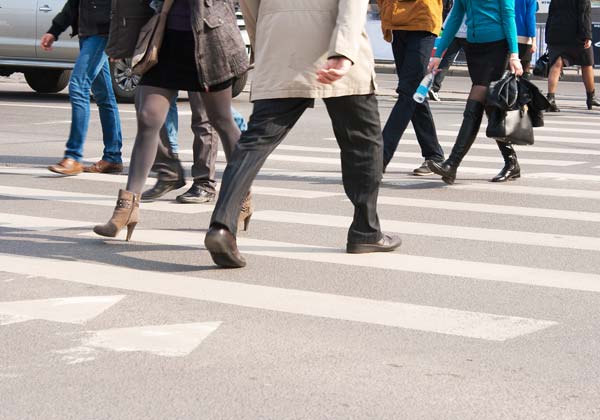Did you know?
- Both brisk and leisurely walking can help you meet Canada's 24-Hour Movement Guidelines, support healthy ageing and can provide a variety of physical and mental health benefits.1
- The average person can walk 1km in 12 minutes, and yet many people use a motor vehicle for trips less than 3km.2
- Walkable neighbourhoods with destinations that are close, well-connected streets and adequate green space, can increase physical activity levels of people who live there.3,4,5
- Walking instead of driving to school, work, or to do errands helps improve air quality and reduce greenhouse gas emissions.4,6,7
- Walking to places instead of driving saves money on gas and parking expenses.8
Want to walk to work? Try active commuting!
Leave the car behind – get some exercise and help the environment.
Learn how workplaces can support active commuting.
Active commuting is good for health, the environment and for business!
Want your child(ren) to walk to school? Try active school travel!
The Active & Safe Routes to School partnership has many programs and safety tips to get you started.
Community Design and Walking
Walking as a mode of AT is supported by healthy community design which influences transportation choices.

